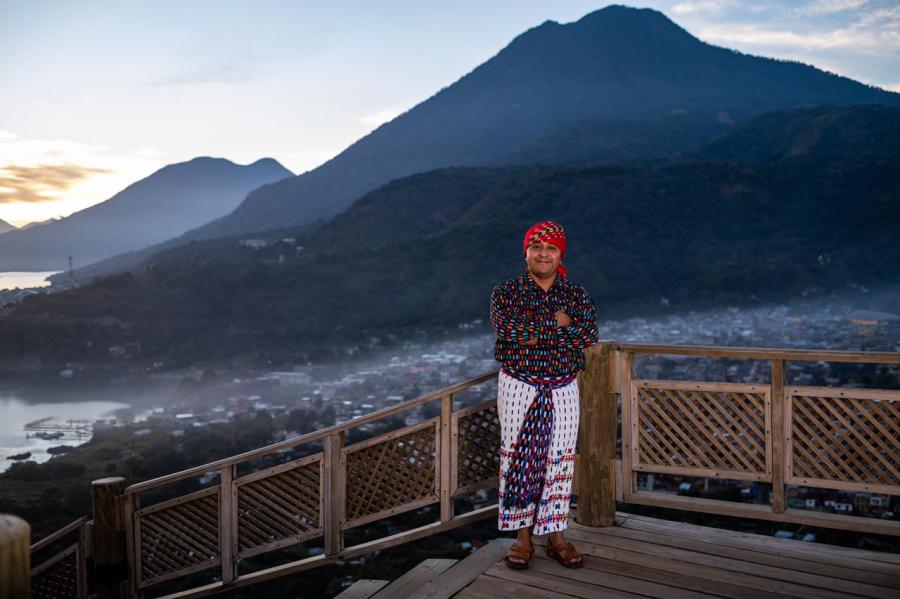That the Maya of Ixil country have suffered dreadfully as a result of counterinsurgency is but one of Guatemala's many depressing realities (Manz 1988; Stoll 1988; Guatemalan Church in Exile 1989). There is no adequate way that one person can tell of another's pain, but try we must, especially if our lives as privileged North American scholars are to reflect any semblance of academic responsibility. I say this at the outset fully aware that the dimension of the Ixil tragedy addressed here - that of population loss and displacement - is conveyed by means of several graphs and an array of statistics, a crude, risky medium at best. My concern at resorting to statistical analysis in order to gauge human suffering is overridden by my belief that the statistics at hand help contextualize, and so illuminate, a sad, collective experience.
I first portray the evolution of the Ixil population over the long run, as part of a regional scenario from conquest in the sixteenth century to counterinsurgency in the twentieth. Then come data on the recorded and projected population of Ixil country over the past 40 years. I then try to reconcile the shortfall between how many people local health units can account for between 1984 and 1987 and how many people government demographers predicted there would be. The exercise inevitably raises as many questions as it answers, for the vicissitudes of Ixil survival lend themselves neither to conclusive nor definitive interpretation.
Historical Trajectory (1520-1980)
The movement of the Ixil population over time is bet appreciated in regional context. Geographically, Ixil country incorporates the municipios of Chajul, Nebaj, and San Juan Cotzal - three predominantly Mayan townships in the eastern ranges of the Cuchumatán highlands (Lovell 1985a). Figure 1, based on the sources and estimates listed in Lovell (1985b), charts the collapse, recovery, and growth of the Cuchumatàn population between 1520 and 1980. Regional demographic profiles may conceal important degrees of subregional variation, but in this case the historical trajectory of Ixil country conforms more or less to the general Cuchumatàn trend.
For the purposes of this exercise, the most salient feature of Figure 1 is to observe that, following conquest by imperial Spain, it took the Cuchumatàn population more than four centuries to replace itself (1520-1950), only to double in size over the next generation. Such a dramatic surge in population as that which occurred during the 30 years from 1950 to 1980 would tax the resources and test the political resolve of any society. In a fundamentally divided and unequal society such as Guatemala, where most of the post-1950 population growth took place among impoverished rural folk, many of them Maya Indians, the pressures exerted on land, food availability, job opportunities, health and education provisions, and other basic necessities reached crisis levels.
It was under these circumstances that, during the 1970s, the Guerrilla Army of the Poor (EGP) began to infiltrate Maya communities in the Cuchumatàn highlands, those of Ixil country among them (Payeras 1983). The prospect, more perceived than real, of a mass of Indians rising to rebellion to wage revolutionary armed struggle against a government unable or unwilling to create a more just society unleashed throughout Guatemala a brutal counterinsurgency (Carmack 1988). In Ixil country, the consequences of counterinsurgency were myriad and profound, nowhere more starkly revealed than in statistics of the recorded and projected population for the decade between 1980 and 1990.
Ixil Demography (1950-1990)
Table 1 summarizes the recorded and projected population of Ixil country, by municipio, between 1950 and 1990. Figures 2,3 and 4 plot this same information graphically. In each of these three figures, the broken upper line indicates projected population size throughout the 1950s, based on the results of national censuses carried out in 1952, 1964, 1973, and 1981 as well as departmental projections calculated for the years 1980 to 2000. These estimates, derived largely from pre-violence trends, were made by Guatemalan demographers working for the Instituto Nacional de Estadística (1988) and so may be considered official government reckoning. The unbroken bottom line in each of these three figures indicates recorded population size for two or three specific years in the 1980s, based on the national census of 1981 and on information provided by the local Centro de Salud of each Ixil township. Striking discrepancies between projected and recorded population in the three communities, but in Chajul and Nebaj most of all, impart a clear sense of the demographic impact of counterinsurgency in Ixil country. When focusing on the years between 1984 and 1987, it may be estimated that the shortfall between projected population size and recorded population size is on the order of 50,000. How can we account for these 50,000 "missing" persons?
Table 1
Recorded and Projected Population,
Ixil Country, Guatemala
1950 1964 1973 1981 1984 1986 1987 1990
Chajul
Recorded 8,258 13,485 18,092 15,713 13,500*
Projected 34,2563 35,667 40,281
Nebaj
Recorded 13,253 23,415 27,259 18,134 15,188* 23,021*
Projected 42,086 43,171 46,637
San Juan Cotzal
Recorded 9,244 12,211 12,698 10,944 12,246*
Projected 16,879 17,135 17,953
*Population count based on information provided by local Centro de Salud. These numbers may be less than they should be, owing to the difficulty posed in getting reliable data for the period 1984-1987. All other population figures, whether recorded or projected, are the official statistics of either the Dirección General de Estadística (1950-1981) or the Instituto Nacional de Estadística (1986-1990).
Recovering the Lost
The counterinsurgency sweeps of the early 1980s sent thousands of Ixils fleeing to the safety of the mountains, then (and still to some degree today) the domain of the EGP. If perhaps 10,000 people presently live in "zones of refuge" under guerrilla control, then perhaps another 10,000 sought shelter there at some juncture before returning voluntarily or by force to their homes in settlements which, in the interim, have been subjected to military reorganization as "Development Poles" (Cultural Survival 1988). Bulletins from refugee camps in Mexico indicate that few Ixils (only 100 or so officially) currently reside there, though the unofficial count in previous years may have been higher. Upwards of 1,000 Ixils live in Guatemala City, with smaller itinerant groups peddling textiles in Antigua and Panajachel. A big unknown is the southern coast. For almost a century Ixils have worked temporarily as contracted laborers on coffee plantations along the Pacific piedmont; how many have chosen to stay there rather than return home is difficult even to estimate. To these apparent if elusive numbers we should add those who made it overland through Mexico and across the Río Grande, but Ixils do not have the same kind of presence in the United States as do other Maya peoples - Q'anjob'ales and Jakaltekos, to name but two.
All the above conjectures deal with people who are alive. The shortfall between recorded and projected population must of necessity be accounted for also in terms of the dead and the unborn. How many Ixiles were killed by the national armed forces and how many died from sickness and hunger as a result of their fugitive life in the hills is again not easy to determine. Similarly, Ixil fertility during the years of violence would surely have been adversely affected, with fewer women, many of them widowed or left without a partner at a young age, bearing fewer children than normal. Though again unknown, the dead and the unborn cannot have been numerically insignificant.
If all this somber accounting provokes an understandable feeling of rage and despondency, let us choose to end with a few observations that leave some room for optimism. Stoll (this issue, pp. 4-9) reports that the Ixils of Nebaj have ousted ladinos (non-Indian Guatemalans) from municipal office, that they themselves now control the business of contracting local labor for work on coastal plantations, and that more and more Ixils are becoming small-scale entrepreneurs. Perhaps most crucial of all, the drift of land falling into ladino hands has been halted, indeed reversed. Maya resilience, a remarkable feature from colonial times on (Lovell 1988), is thus today in evidence throughout Ixil country. Daunting problems remain - the conspicuous presence of the military, divisions within communities over religious worship, continued service in Civil Patrols, too little land for a population again beginning to grow rapidly - but a bleak decade in Ixil country has ended as Maya Indians take important steps to help shape their own future.
Acknowledgments
I would like to thank David Stoll for helpful commentary on an earlier draft of this article and for furnishing me with the population figures calculated by local health units for the period 1984-1987. His forthcoming work on Ixil country will surely clarify many of the issues touched upon here. A version of this article was presented to the Association of American Geographers, Toronto, April 1990.
References
Carmack, R.M., ed.
1988 Harvest of Violence: The Maya Indians and the Guatemalan Crisis. Norman and London: University of Oklahoma Press.
Cultural Survival
1988 Counterinsurgency and the Development pole Strategy in Guatemala. Cultural Survival Quarterly 12(3):11-17.
Guatemala, Dirección General de Estadstica
1971 Sexto censo de población 1950.
1971 Sèptimo censo de población 1964.
1975 Octavo censo de población 1973.
Guatemala, Instituto Nacional de Estadística
1984 Noveno censo de población 1981, cifras definitivas.
1988 Guatemala: Población estimada por departamento y municipios 1985-90.
Guatemala, Secretaría General del Consejo Nacional de
Planificación Económica
1985 Proyecciones departamentales de población 1980-2000.
Guatemalan Church in Exile
1989 Guatemal: Security, Development, and Democracy.
Lovell, W.G.
1985a Conquest and Survival in Colonial Guatemala: A Historical Geography of the Cuchumatàn Highlands, 1500-1821. Kingston and Montreal: McGill-Queen's University Press.
1985b From Conquest to Counter-Insurgency. Cultural Survival Quarterly 9(2):46-49.
1988 Surviving Conquest: The Maya of Guatemala in Historical Perspective. Latin American Research Review 23(2): 25-57.
Manz, B.
1988 Refuges of a Hidden War: The Aftermath of Counterin surgency in Guatemala. Albany: State University of New York Press.
Payeras, M.
1976 Days of the Jungle: The Testimony of a Guatemalan Guerrillero, 1972-1983. New York: Monthly Review Press.
Stoll, D.
1988 Evangelicals, Guerrillas, and the Army: The Ixil Triangle Under Ríos Montt. In R.M. Carmack, ed. Harvest of Violence: The Maya Indians and the Guatemalan Crisis. pp. 90-116. Norman and London: University of Oklahoma Press.
1990 "The Land No Longer Gives": Land Reform in Nebaj, Guatemala. Cultural Survival Quarterly 14(4):4-9.
Article copyright Cultural Survival, Inc.


